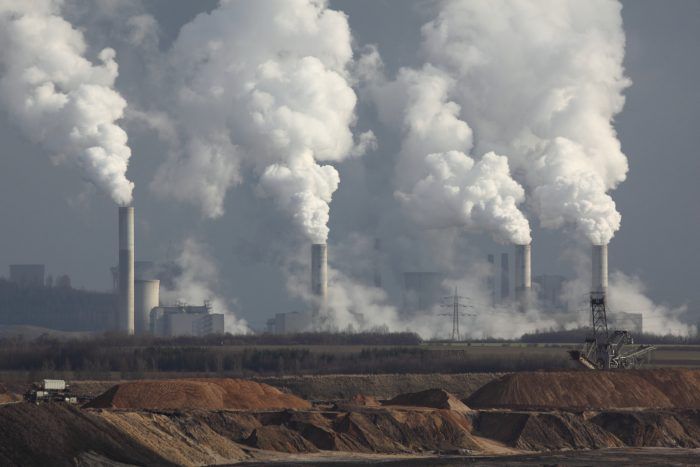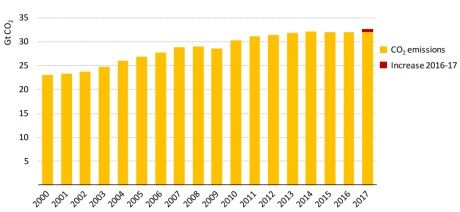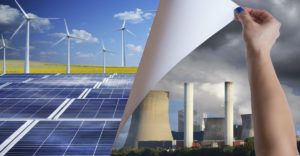
Page Contents
Advertiser Disclosure: At ElectricityRates.com, our number one goal is to help you make better energy decisions. We adhere to strict editorial guidelines, however this post may include references to products offered from our partners.

The increase in carbon emissions “was the result of robust global economic growth of 3.7%, lower fossil fuel prices and weaker energy efficiency efforts”, the IEA said in its newly-publishedGlobal Energy and CO2 Status Report 2017.
Fatih Birol, IEA executive director, said: “The robust global economy pushed up energy demand last year, which was mostly met by fossil fuels, while renewables made impressive strides. The significant growth in global energy-related carbon dioxide emissions in 2017 tells us that current efforts to combat climate change are far from sufficient. For example, there has been a dramatic slowdown in the rate of improvement in global energy efficiency as policymakers have put less focus in this area.”
Energy demand worldwide increased by 2.1% in 2017, according to IEA preliminary estimates. This compares with 0.9% in 2016 and 0.9% on average over the previous five years. Global energy demand in 2017 reached an estimated 14,050 million tonnes of oil equivalent (toe), compared with 10,035 million toe in 2000.
Fossil fuels met 70% of the growth in energy demand, with natural gas demand increasing the most, reaching a record share of 22% of total energy demand. Renewables made up about 25% of demand growth, while nuclear use accounted for 2% of the growth. The overall share of fossil fuels in global energy demand in 2017 remained at 81%, “a level that has remained stable for more than three decades despite strong growth in renewables”.
Most of the growth in global energy demand was in Asia, with China and India together representing more than 40% of the increase. Overall, Asian economies accounted for two-thirds of the global increase in carbon emissions. China’s economy grew by almost 7% in 2017 but its emissions increased by just 1.7% to 9.1 billion tonnes.
“The growth in energy-related carbon dioxide emissions in 2017 is a strong warning for global efforts to combat climate change, and demonstrate that current efforts are insufficient to meet the objectives of the Paris Agreement,” the IEA said.
The IEA’s Sustainable Development Scenario charts the path towards meeting long-term climate goals. Under this scenario, global emissions need to peak soon and decline steeply to 2020. This decline will now need to be even greater given the increase in emissions in 2017, the IEA said. The share of low-carbon energy sources must increase by 1.1 percentage points every year, more than five-times the growth registered in 2017, it added.
World electricity demand grew by 3.1% to 25,570 terawatt hours (TWh) last year, significantly higher than the overall increase in energy demand. Together, China and India accounted for 70% of this growth in demand, with another 10% coming from other emerging economies in Asia.
Renewables accounted for almost half of the global additional generation required to meet increasing demand, bringing their share in global generation to a record high of 25%.
The output from nuclear plants increased by 26 TWh in 2017, as a significant amount of new nuclear capacity saw its first full year of operation. Nuclear generation accounted for 10% of global power production last year, up 3% relative to 2016, with Japan contributing 40% of this growth. Nonetheless, nuclear capacity additions globally only just exceeded retirements in 2017, the IEA noted.



